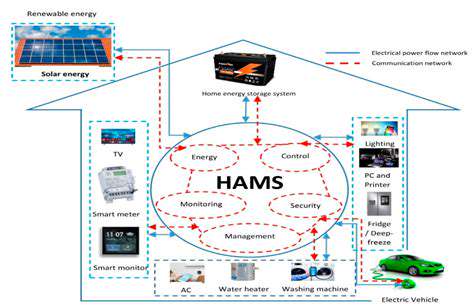The Economic Multiplier of Offshore Wind Development
Across the world, nations are rapidly embracing offshore wind energy as a cornerstone of their sustainable development strategies. Coastal regions from the North Sea to the Pacific Rim are witnessing a surge in turbine installations. This renewable energy source stands out for its ability to generate clean power while creating substantial economic ripple effects. The sector's expansion reflects both technological progress and growing environmental consciousness among policymakers.
Several factors drive this global movement, including volatile fossil fuel prices and international climate commitments. Strategic placement of wind farms near population centers helps maximize energy delivery while minimizing transmission losses. Countries with extensive coastlines particularly benefit from this geographically distributed power generation approach.
Technical Considerations in Offshore Wind
Modern offshore turbines represent engineering marvels, with some models standing taller than the Eiffel Tower. These technological advancements allow single turbines to power thousands of homes while withstanding extreme marine conditions. Engineers continuously refine designs to improve durability against saltwater corrosion and powerful ocean currents.
Key technical challenges include developing floating platforms for deeper waters and creating maintenance systems that reduce operational downtime. The integration of smart monitoring technologies enables real-time performance tracking, helping optimize energy output throughout each turbine's lifespan.
Environmental Impact Assessment
Comprehensive ecological studies precede all major offshore wind projects. Researchers meticulously examine potential effects on marine mammals, seabird populations, and underwater habitats. Innovative mitigation strategies, such as turbine spacing adjustments and seasonal construction limitations, help protect vulnerable species.
The industry increasingly adopts nature-inclusive designs, incorporating artificial reefs into turbine foundations to enhance marine biodiversity. Ongoing monitoring programs ensure that any unexpected environmental impacts can be quickly addressed through adaptive management approaches.
Economic Benefits of Offshore Wind
Coastal communities experience direct economic revitalization through wind farm development. From steel fabricators to maritime services, numerous local businesses benefit from the sector's supply chain demands. The industry particularly boosts employment in regions transitioning from traditional maritime industries like fishing or shipbuilding.
Secondary economic effects include increased port activity and growing demand for specialized training programs. Many coastal towns report renewed economic vitality as wind projects bring both direct employment and increased consumer spending to local businesses.
Regulatory Frameworks and Policy Support
Effective governance structures accelerate offshore wind deployment while ensuring responsible development. Leading nations establish clear roadmaps for seabed leasing and project approvals. Streamlined permitting processes significantly reduce development timelines and associated costs.
Policy instruments like renewable portfolio standards and clean energy credits provide market certainty for investors. International collaboration on standards and best practices helps emerging markets avoid common pitfalls in sector development.
Grid Integration and Infrastructure
Modern power systems increasingly incorporate advanced technologies to handle intermittent renewable generation. Innovative solutions like hybrid offshore substations and multi-purpose interconnectors maximize infrastructure efficiency. These developments help maintain grid stability despite variable wind conditions.
Forward-looking grid planning considers both current needs and future expansion possibilities. Some projects now incorporate energy storage directly into offshore platforms, creating more flexible and resilient power systems.
Challenges and Future Considerations
While promising, the sector faces ongoing hurdles including supply chain bottlenecks and skilled labor shortages. Addressing these constraints requires coordinated efforts across industry, academia, and government. Emerging technologies like airborne wind systems and vertical-axis turbines may offer solutions for challenging environments.
The next decade will likely see increased focus on circular economy principles in turbine manufacturing and decommissioning. Lifecycle approaches that minimize waste and maximize material recovery will become standard practice in sustainable project development.
Job Creation Across the Supply Chain
Development and Manufacturing of Wind Turbines
Turbine production sparks industrial renewal in traditional manufacturing regions. Specialized components require precision engineering skills that command premium wages. Workers transitioning from automotive or aerospace sectors often find their skills highly transferable to wind technology production. The sector's growth has revitalized numerous industrial towns facing manufacturing decline.
Component specialization creates niche manufacturing opportunities. Some facilities focus exclusively on tower sections, while others produce complex gearbox assemblies. This specialization drives continuous process improvements and quality enhancements throughout the supply chain.
Construction and Installation Phases
Offshore construction demands unique skill sets combining maritime expertise with heavy engineering. Specialized vessel crews command premium salaries due to their rare qualifications. Local maritime training centers have expanded programs to meet surging demand for certified offshore technicians.
Port cities experience particular economic boosts during construction phases. Temporary workforce housing, catering services, and equipment rentals all see increased activity. Many regions report lasting infrastructure improvements from wind-related port upgrades.
Operation and Maintenance of Offshore Wind Farms
Long-term operations create stable, year-round employment opportunities. Technicians undergo rigorous safety training to work in challenging marine environments. The industry offers clear career progression paths from entry-level positions to senior technical roles.
Remote monitoring technologies create new hybrid roles combining digital skills with traditional maintenance expertise. These positions often appeal to younger workers seeking technology-focused careers in the green economy.
Supply Chain and Infrastructure Development
Ancillary services form a critical part of the employment picture. Marine survey companies, helicopter services, and specialized equipment providers all experience growth. This ecosystem of supporting businesses creates diverse opportunities beyond direct wind industry employment.
Local educational institutions increasingly partner with developers to create tailored training programs. These initiatives help ensure regional workforces can access the sector's high-quality jobs while meeting industry needs for skilled personnel.
Research, Development, and Innovation in Offshore Wind Technology
University research hubs have emerged as important economic drivers in wind energy clusters. Doctoral programs in marine renewable energy attract international talent and research funding. Private sector R&D centers often locate near academic partners to facilitate collaboration.
The innovation pipeline extends from materials science to digital twin technologies. Continuous improvement in turbine design and operation methods ensures the sector remains at the forefront of renewable energy technology.
Boosting Local and Regional Economies

Strengthening Small Business Sectors
Wind projects create opportunities for diverse local enterprises. Maritime service companies often expand to meet new demand for crew transfers and equipment rentals. Family-owned businesses frequently transition from fishing or coastal tourism to wind-related services.
The sector's growth stimulates entrepreneurship in unexpected areas. Former oil rig workers have launched successful safety training businesses, while local caterers expand to service offshore crews. This economic diversification makes coastal communities more resilient to sector-specific downturns.
Investing in Infrastructure Development
Port upgrades represent some of the most visible local economic benefits. Enhanced facilities often attract additional maritime industries beyond wind energy. Improved road and rail connections to port areas benefit all local businesses through better logistics.
Some regions have leveraged wind-related infrastructure improvements to develop new industrial clusters. Formerly underutilized port areas now host turbine pre-assembly facilities and specialized manufacturing operations.
Promoting Regional Tourism
Offshore wind farms have unexpectedly become tourist attractions in some locations. Visitor centers and boat tours educate the public while generating additional revenue. The clean energy narrative enhances regional branding for environmentally conscious travelers.
Some coastal hotels partner with developers to offer green stay packages featuring wind farm tours. This synergy between renewable energy and tourism creates unique marketing opportunities for destination marketers.
Encouraging Innovation and Technology Adoption
Local technology startups increasingly focus on wind energy applications. From drone inspection services to predictive maintenance algorithms, these ventures create high-value jobs. University spin-off companies commercialize research in areas like corrosion protection and marine coatings.
Regional innovation ecosystems benefit from wind-related research funding and industry partnerships. This virtuous cycle of investment and innovation helps retain talented graduates in local economies.
Enhancing Workforce Development
Vocational training programs have adapted curricula to meet industry needs. Community colleges now offer wind technician certifications that guarantee employment upon completion. These programs often attract career-changers seeking stable employment in growing sectors.
Apprenticeship models combine classroom learning with on-the-job training. This approach helps workers earn while they learn, making career transitions more financially accessible for local residents.
Medical professionals increasingly recognize that standardized communication protocols prevent costly errors. Digital prescription systems with built-in safety checks have become essential tools in modern healthcare practice. These technologies complement rather than replace the critical thinking skills of trained clinicians, creating multiple layers of patient protection.
Long-Term Sustainability and Economic Viability
Long-Term Economic Benefits
Offshore wind represents a generational economic opportunity for coastal regions. The 25-30 year lifespan of projects ensures decades of local employment and supply chain activity. Decommissioning and repowering cycles create recurring investment opportunities that sustain industrial capabilities.
Regional economic modeling shows how wind clusters attract related industries. Subsea cable manufacturers and power electronics firms often co-locate near major projects, creating industrial synergies. This clustering effect amplifies the initial economic impact through secondary business formation and specialized service development.
Ensuring Sustainability Beyond the Initial Investment
Lifecycle approaches now guide project planning from conception through decommissioning. Developers increasingly adopt circular economy principles in turbine design to facilitate future material recovery. These forward-looking practices ensure environmental responsibility across the entire project timeline.
Stakeholder engagement has evolved into continuous dialogue rather than one-time consultations. Regular community advisory panels help align project operations with local priorities. This ongoing relationship-building fosters mutual understanding and helps address emerging concerns proactively.
Environmental monitoring continues throughout project operation, allowing adaptive management. Marine scientists work alongside operators to minimize ecological impacts. This collaborative approach balances energy production with environmental stewardship.
Financial instruments like decommissioning bonds ensure proper end-of-life planning. These mechanisms guarantee that future removal costs won't burden public finances. Such safeguards demonstrate the industry's commitment to full lifecycle responsibility.
Technology roadmaps guide continuous improvement in sustainability metrics. Each new turbine generation achieves better energy yield with reduced material inputs. This innovation trajectory ensures the sector's ongoing environmental and economic competitiveness.

